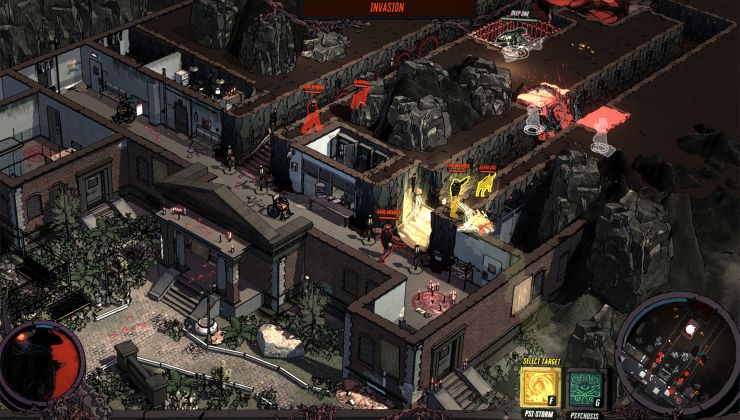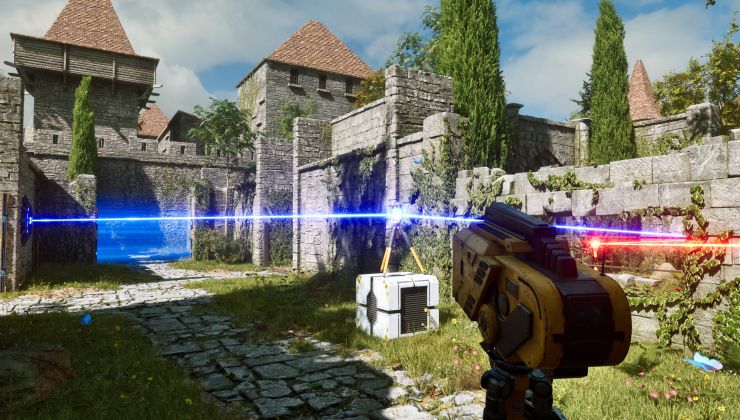Well this sure is interesting, Valve have announced some flaws in their Steam Hardware Survey that caused cyber cafes to over-count users.
Here's what Valve said in full:
The latest Steam Hardware Survey incorporates a number of fixes that address over counting of cyber cafe customers that occurred during the prior seven months.
Historically, the survey used a client-side method to ensure that systems were counted only once per year, in order to provide an accurate picture of the entire Steam user population. It turns out, however, that many cyber cafes manage their hardware in a way that was causing their customers to be over counted.
Around August 2017, we started seeing larger-than-usual movement in certain stats, notably an increase in Windows 7 usage, an increase in quad-core CPU usage, as well as changes in CPU and GPU market share. This period also saw a large increase in the use of Simplified Chinese. All of these coincided with an increase in Steam usage in cyber cafes in Asia, whose customers were being over counted in the survey.
It took us some time to root-cause the problem and deploy a fix, but we are confident that, as of April 2018, the Steam Hardware Survey is no longer over counting users.
It's good to see Valve be open about this and get it fixed, as many people suspected issues for a while now and it's interesting to see some validation of certain theories about cyber cafe use. The funny thing is, someone mentioned this to me on reddit today and I didn't actually think it would have been such a big issue, so it's fun to be wrong.
It's also interesting to note, that according to what Valve said, you're only supposed to be counted once a year, although many of us have seen an issue where it will come up many times within Windows or while using Steam with Wine and rarely on the native Linux client. For all we know, this could have been part of the issue that's now solved.
We will be tracking it on our dedicated page. It certainly will be interesting to see what happens in future. What are your thoughts?
FYI: Some of my friends worked/working in cyber cafe. That's why I know some 'stories'.
Thanks for sharing, and for being our East Asia correspondent in general. :)
Meanwhile, it's now been a couple of years since any of the Linux-based computers in our household have been counted in the Hardware Survey... But that's not a bug, and it all works "as designed".
I actually got the survey two days ago and got totally by surprise!
I've suspected inaccuracies in the Steam counts, for a long time. One other Windows versus other OS thing that I've noticed is the fact that Steam auto-starts on Windows when you log on to Windows. With my Linux desktops, Steam only logs on, when I launch the client myself.Steam works the exact same way in Windows as Linux, you decide whether you want it to start with the OS or not, mine starts when I say it starts not when Windows starts, never let anything auto-start with the OS, especially Windows as that's a surefire way to get your system infected.
ps. we've been telling Valve for years their survey was screwed, it's not tinfoil hats cutting off oxygen to our brains.
Here is my experience on the matter:
First of all Steam on Linux and Steam on Windows are completely different things. They are built specifically for each platform. When you do a default Steam install on Windows (7,8,10) it adds the Steam client to the auto-start applications, which you can modify using the MSConfig tool. I have personally installed Steam client on more than 10 Windows machines (7,8,10) and this is the behaviour I have observed.
Then, I have also installed Steam on multiple versions of Linux - Debian 7,8,9,10 + Ubuntu 16,17 + Mint - mostly using Gnome3 desktop, but also XFCE desktop and others. Approx 10 separate Steam client installs, and in each case the Steam client does not auto-start based on Default settings. I am not sure the case with KDE desktop and every other version of Linux out there.
Interesting. Then soon(tm) I should get another survey (while I got 3 on windows in the past year, so something certainly is not working there...)
Thanks for reporting!
It's also interesting to note, that according to what Valve said, you're only supposed to be counted once a year,If I got it at all, it was when using cedega.
I really have no clue how the survey is supposed to look, or if it just silently submits data.
I do find the "survey taken" dates in my files, but it never ever asked me for permission to send survey data. So I guess it is genuinly meant to run, except that it doesn't.
I really have no clue how the survey is supposed to look, or if it just silently submits data.
I do find the "survey taken" dates in my files, but it never ever asked me for permission to send survey data. So I guess it is genuinly meant to run, except that it doesn't.
You're asked if you want to take the survey and at least one question for what the software can't find out (network speed?). Once a year might about match with my experience.
It would only be correct if the total number of windows installations would have declined again.
It would only be correct if the total number of windows installations would have declined again.
Well, I didn't check Windows, but for sure, the fix led to a rise for Linux:
https://www.gamingonlinux.com/index.php?module=steam_linux_share
As Gaming in a vm becomes more common (PCI passthrough rocks), it's not clear what happens to those stats. I have two physical machines with 2 GPUs each, does that count for example as one install? Two? Four? If one switches between OS's, does that change anything? How are even basic hardware metrics counted, is a vCPU a core or thread? Etc.Naturally only the hardware available to the currently running OS is counted in the survey. If you happen to be running a Windows VM with a dedicated Nvidia GPU when the survey pops up, that's what Valve will see you gaming on. If you're lucky enough to get the survey on multiple VMs/hosts in the same month, they'll be counted as separate systems and IMHO for good reason. It's just a technicality that (most of) the hardware is shared. I don't know if it's still true, but you used to be able to review the data before sending it so you could make certain.
BTW, why do you think gaming in VMs will ever become common? It's a nifty trick and worth more nerd cred than dual booting, but not as much as not dual booting ;). In any case, it's not something a game developer would specifically target so they wouldn't care.
Oh, and of course a vCPU acts like a CPU core to the VM client. The whole point of a VM is that apps running on it see a fairly normal hardware setup and don't need to know the difference.
Yes PXE, most of big cyber cafe (50++ PCs) use this system. Easy to maintain. But, if BSOD..... :'( Good luck to employees. :D
FYI: Some of my friends worked/working in cyber cafe. That's why I know some 'stories'.
Can you boot into a full desktop environment with that? I thought PXE boot did just enough to get a barebones boot image from a TFTP server, only to start an install on the local system. Just to try it out, I once installed Fedora on my laptop with a setup like that (PXE boot into tiny installer over TFTP, download everything else over http from a Fedora mirror), and I thought it was neat -- but booting into a complete system, and *using it* like that would be considerably neat-er!
I'm curious because I eventually want to set up a couple of thin clients around the house, connected to my main desktop, once my other ancient computers kick the bucket entirely. So far I've tried multiseat (which is pretty trivial to set up thanks to systemd), though that's limited to the number of graphics outputs one has; VNC works ok with a bit of pulseaudio twiddling to get accompanying audio, but it's really slow.
...a quick google search suggests that even Raspberry Pi 3s are capable of this. hmmm...
Sorry about the wildly off-topic post, though. Slightly more on topic: 'cyber cafe's were huge in Turkey in the early 00s; I had Starcraft-addicted cousins who practically lived in those places. They're all but extinct nowadays though.
Sorry about the wildly off-topic post, though. Slightly more on topic: 'cyber cafe's were huge in Turkey in the early 00s; I had Starcraft-addicted cousins who practically lived in those places. They're all but extinct nowadays though.Your cousins are all but extinct? Condolences, my dear chap!
As Gaming in a vm becomes more common (PCI passthrough rocks), it's not clear what happens to those stats. I have two physical machines with 2 GPUs each, does that count for example as one install? Two? Four? If one switches between OS's, does that change anything? How are even basic hardware metrics counted, is a vCPU a core or thread? Etc.
Naturally only the hardware available to the currently running OS is counted in the survey.
Never said it wouldn't. Question was does it count as one or more with steam running concurrently.
If you happen to be running a Windows VM with a dedicated Nvidia GPU when the survey pops up, that's what Valve will see you gaming on. If you're lucky enough to get the survey on multiple VMs/hosts in the same month, they'll be counted as separate systems and IMHO for good reason. It's just a technicality that (most of) the hardware is shared. I don't know if it's still true, but you used to be able to review the data before sending it so you could make certain.
That is kind of the point of contention though. I could for example, run without a gpu at all. If the hardware survey popped up then, it would skew the results.
BTW, why do you think gaming in VMs will ever become common? It's a nifty trick and worth more nerd cred than dual booting, but not as much as not dual booting ;). In any case, it's not something a game developer would specifically target so they wouldn't care.
It's more common then you think. There's a reason NVIDIA actively tries to prevent such installs.
Oh, and of course a vCPU acts like a CPU core to the VM client. The whole point of a VM is that apps running on it see a fairly normal hardware setup and don't need to know the difference.
It does matter. The vCPU may not have various features enabled (SSE for example). That again would skew the results.
Sorry about the wildly off-topic post, though. Slightly more on topic: 'cyber cafe's were huge in Turkey in the early 00s; I had Starcraft-addicted cousins who practically lived in those places. They're all but extinct nowadays though.Your cousins are all but extinct? Condolences, my dear chap!
Thanks, I appreciate it. Not many people understand that when I say 'early 00s', I mean 'early Cretaceous (late Mesozoic)'. Here's a group picture we had taken, back in happier days:

I'm on the far left... The only one who survived. :'(
That is kind of the point of contention though. I could for example, run without a gpu at all. If the hardware survey popped up then, it would skew the results.First of all, why would you run Steam on a system without any graphical capabilities (does it even work?), and secondly, do you think this would ever be common enough to cause a significant blip in the statistics? I'm not saying the results are in any way reliable, but surely a few outliers aren't the problem.
It's more common then you think. There's a reason NVIDIA actively tries to prevent such installs.Why would they care enough to do that? Do you mean that they don't actively support them?
It's more common then you think. There's a reason NVIDIA actively tries to prevent such installs.Why would they care enough to do that? Do you mean that they don't actively support them?
IIRC, nvidia supports that feature only on their 'pro' models (the Quadro, etc.). The reason why it takes a convoluted hack is that consumer models hide the necessary info, which is by design on nvidia's part.
Can you boot into a full desktop environment with that? I thought PXE boot did just enough to get a barebones boot image from a TFTP server, only to start an install on the local system. Just to try it out, I once installed Fedora on my laptop with a setup like that (PXE boot into tiny installer over TFTP, download everything else over http from a Fedora mirror), and I thought it was neat -- but booting into a complete system, and *using it* like that would be considerably neat-er!I think you're misinterpret my comment. I was talking about;
I'm curious because I eventually want to set up a couple of thin clients around the house, connected to my main desktop, once my other ancient computers kick the bucket entirely. So far I've tried multiseat (which is pretty trivial to set up thanks to systemd), though that's limited to the number of graphics outputs one has; VNC works ok with a bit of pulseaudio twiddling to get accompanying audio, but it's really slow.
...a quick google search suggests that even Raspberry Pi 3s are capable of this. hmmm...
Sorry about the wildly off-topic post, though. Slightly more on topic: 'cyber cafe's were huge in Turkey in the early 00s; I had Starcraft-addicted cousins who practically lived in those places. They're all but extinct nowadays though.
Steam hwsurvey which related to;
cyber cafe (CC) which related also with;
PXE/network booting system which was/is used by some CCs especially;
50++ computers CCs where almost all CCs using;
Windows.
I think you should seek help on GoL forum [here](https://www.gamingonlinux.com/forum/). Some GoL readers may help you with your problem(s). Just open a new thread/topic there.
Yes PXE, most of big cyber cafe (50++ PCs) use this system. Easy to maintain. But, if BSOD..... :'( Good luck to employees. :D
FYI: Some of my friends worked/working in cyber cafe. That's why I know some 'stories'.
Can you boot into a full desktop environment with that? I thought PXE boot did just enough to get a barebones boot image from a TFTP server, only to start an install on the local system. Just to try it out, I once installed Fedora on my laptop with a setup like that (PXE boot into tiny installer over TFTP, download everything else over http from a Fedora mirror), and I thought it was neat -- but booting into a complete system, and *using it* like that would be considerably neat-er!
I'm curious because I eventually want to set up a couple of thin clients around the house, connected to my main desktop, once my other ancient computers kick the bucket entirely. So far I've tried multiseat (which is pretty trivial to set up thanks to systemd), though that's limited to the number of graphics outputs one has; VNC works ok with a bit of pulseaudio twiddling to get accompanying audio, but it's really slow.
...a quick google search suggests that even Raspberry Pi 3s are capable of this. hmmm...
Sorry about the wildly off-topic post, though. Slightly more on topic: 'cyber cafe's were huge in Turkey in the early 00s; I had Starcraft-addicted cousins who practically lived in those places. They're all but extinct nowadays though.
I' ve done such setups in the past, it works quite well: PXE serves the kernel (&initramfs) trough tftp, the root filesystem is mounted trough NFS.
You just have to mount a couple directories on a local disk or a tmpfs (usually things like /var or /var/run, /tmp, etc; I don't recall exactly).
Though most likely those cyber-cafés load a grub-like imager trough PXE, I've seen some of these in the wild. They can check the hard disk, install a new system image, etc. Pair it with wake on LAN and multicast to quickly upgrade your whole infrastructure.
I' ve done such setups in the past, it works quite well: PXE serves the kernel (&initramfs) trough tftp, the root filesystem is mounted trough NFS.
Thanks, this gives me something to go on.









 How to set, change and reset your SteamOS / Steam Deck desktop sudo password
How to set, change and reset your SteamOS / Steam Deck desktop sudo password How to set up Decky Loader on Steam Deck / SteamOS for easy plugins
How to set up Decky Loader on Steam Deck / SteamOS for easy plugins
See more from me